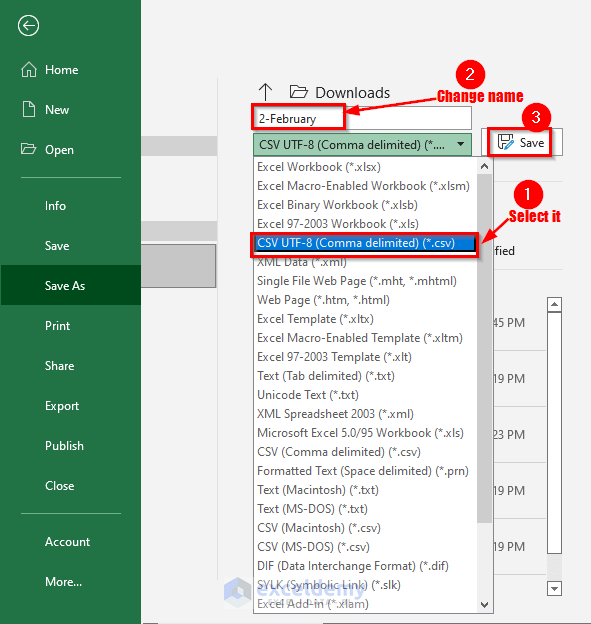5 Easy Ways to Merge Excel Sheets

When working with extensive datasets, merging Excel sheets efficiently can save time and streamline data analysis. Whether you're pulling together sales figures, tracking inventory, or just compiling information from multiple teams, knowing how to merge Excel sheets quickly and accurately is invaluable. Here are five easy methods to help you master the art of consolidating your spreadsheets.
Method 1: Consolidate Sheets Using Excel's Built-in Feature

Excel has a built-in tool known as the "Consolidate" function which allows you to combine data from multiple ranges into one. Here's how you can use it:
- Open the workbook where you want the consolidated data to appear.
- Go to the Data tab, click on Consolidate in the Data Tools group.
- In the dialog box, choose the function for consolidation (e.g., Sum, Average).
- Select your reference range, then add additional ranges by clicking Add.
- Choose whether to link the source data, then click OK.
💡 Note: The Consolidate feature does not automatically update if you change the source data. You'll need to redo the consolidation to reflect changes.
Method 2: Power Query for Advanced Data Combining

Power Query, available in Excel 2016 and later versions, is an extremely powerful tool for data manipulation and consolidation:
- Go to the Data tab and click Get Data > From File > From Workbook.
- Choose the Excel workbook containing the data you want to merge.
- After loading the sheets, go to the Home tab in the Power Query Editor and click Merge Queries or Append Queries depending on your need.
- Use the merge or append options to combine data as required, then load it back into Excel.
Method 3: VBA Script for Automated Merging

Visual Basic for Applications (VBA) can automate repetitive tasks like merging Excel sheets:
- Press Alt + F11 to open the VBA editor.
- Go to Insert > Module, then paste a VBA script to combine sheets.
- Here is a simple example script:
Sub MergeWorksheets()
Dim ws As Worksheet
Dim masterWs As Worksheet
Dim cell As Range
Dim lastRow As Long
' Add a new worksheet to store the consolidated data
Set masterWs = ThisWorkbook.Sheets.Add(After:=ThisWorkbook.Sheets(ThisWorkbook.Sheets.Count))
' Loop through all worksheets
For Each ws In ThisWorkbook.Worksheets
If ws.Name <> masterWs.Name Then
lastRow = masterWs.Cells(masterWs.Rows.Count, 1).End(xlUp).Row
ws.Range("A1:D1000").Copy Destination:=masterWs.Cells(lastRow + 1, 1)
End If
Next ws
masterWs.Name = "Consolidated_Sheet"
End Sub
🛑 Note: While VBA is powerful, it requires knowledge of VBA scripting. Errors in the script can lead to data loss or corruption.
Method 4: Using Excel Tables

Another approach to merge data is by using Excel tables:
- Convert your data ranges into tables by selecting the range and pressing Ctrl + T.
- Click anywhere inside the table, go to the Design tab, and click on Summarize with PivotTable to create a summary table.
- Alternatively, if the data structures are the same, you can simply cut and paste the entire table into another workbook.
This method is great for users who frequently update and interact with dynamic data.
Method 5: Third-party Add-ins

For those seeking a no-code solution, third-party add-ins like ASAP Utilities or Ablebits Ultimate Suite can simplify the merging process:
- Install the add-in from a trusted source.
- Follow the add-in's documentation to merge data from various sheets.
These tools often provide user-friendly interfaces for data manipulation, making them accessible even if you're not a power Excel user.
In wrapping up, whether you’re a novice Excel user or a seasoned professional, these methods offer a spectrum of approaches to merge Excel sheets. From native Excel functions to automated scripts and third-party tools, you now have the tools to consolidate data efficiently. Keep in mind that the method you choose should reflect your comfort level with Excel, the complexity of your data, and your requirement for ongoing updates. Each method has its strengths, and with this guide, you’re equipped to select the best one for your specific needs, enhancing both your productivity and data accuracy.
Can I automatically update merged data in Excel?

+
Yes, if you use Power Query or VBA, you can set up data connections that automatically refresh when the source data changes. However, with the Consolidate function, you’ll need to manually rerun the consolidation process.
How do I ensure data integrity when merging?

+
Always backup your data before merging. Use Excel’s built-in checks like duplicate detection, formula consistency, and formatting options to maintain data integrity.
What if my sheets have different structures?

+
You might need to restructure your data or manually adjust columns to match before using any merging method. Power Query can be particularly helpful here as it allows for data transformation before merging.